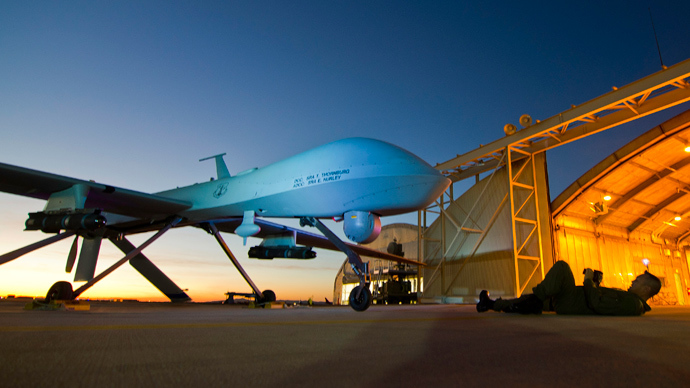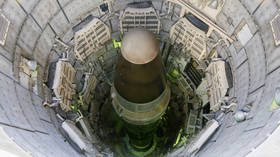At least 49 large military drones crashed over US since 2001 - report

A minimum of 49 Unmanned Aerial Vehicles (UAVs) operated by the US armed forces have suffered major crashes in US airspace since 2001, a worrying number considering the thousands of civilian drones set to flood American skies in the coming months.
The total was compiled by the Washington Post, which used Freedom of
Information requests to obtain the data, which includes only
Class A accidents - those that caused more than $2 million
dollars of damage. The real number of incidents and near-misses
is likely considerably higher, but the Air Force and Army refuse
to provide information for smaller accidents that did not require
a public investigation.
According to its own documents, the Federal Aviation
Administration (FAA) is “incrementally” loosening drone
regulations, allowing “safe integration” for drones, which
currently predominantly operate in military airspace, and need
special licenses to fly through shared airspace. Nonetheless, it
estimates that there will be more than 7,500 commercial drones in
US airspace by the end of the decade. According to internal
Pentagon data, it also plans to launch its own military-grade
drones from at least 144 sites by 2017.
Read more: Pentagon crashed more than 400 military drones
Both the army and the regulators are sanguine about the prospect of a drone-filled sky.
“We’re really big into risk management. I’m comfortable with
what I see with the mitigation approach that we’re taking,”
said Air Force Colonel James Marshall, safety director for the
Air Combat Command, pointing out that crashes have plateaued in
recent years as equipment has improved, and experience mounted
“As we integrate unmanned aircraft into the national airspace
system, I believe that the public expect us not only to maintain
but to continue to enhance the levels of safety that we’ve been
able to achieve for conventional aircraft,” Michael P.
Huerta, the FAA’s administrator.
But not everyone is convinced, particularly when risks concern
flying certain types of drones or launching flights over
populated areas.

Most worrisome is the Predator, a legacy UAV that has not been
produced since 2011. The US Air Force still operates 150 of them,
with many of the craft expected to return to American soil, as
the White House curtails military involvement abroad.
“The problem is that nobody is comfortable with Predator.
Nobody,” an unnamed pilot said during his debriefing
interview following a crash in New Mexico in 2010.
“[It’s] the most back-assedward aircraft I ever flown.”
Even Frank W. Pace, the president of the aircraft division of
General Atomics Aeronautical Systems, the Predator’s maker,
expressed reservations.
“You really want to be flying it over areas that aren’t
highly populated,” he told the Post. “As a citizen, I
wouldn’t want it to happen.”
Although so far Predators have been restricted mostly to military
airspace, the Pentagon wants to broaden their use for civilian
purposes, such as monitoring fires, as was the case when a
Predator was dispatched to Yosemite National Park last year.
The Defense Department alone – presumably the best-qualified and
most careful drone operator – currently holds over 160 licenses
to use drones in shared airspace, double the amount at the
beginning of the decade.
“To me, it’s appalling that they’re flying them over urban
areas,” said Ed Kinane, who heads a New York pressure group
called Upstate Drone Action.
“The Pentagon has been so eager to get their hands on drones,
and more drones, that they’re not as good as they should
be.”
The dangers stem from a combination of an immature technology,
and poorly trained pilots.
Firstly, the current generation of drones does not possess proper
‘detect and avoid’ technology that could prevent mid-air
collisions, a particularly relevant factor when the operator is
sitting hundreds or thousands of miles away.
Secondly, drones rely on satellite signals. Excerpts from
post-accident transcripts show that pilots routinely lost contact
with their drone for seconds at a time, and often for minutes.
Theoretically, drones revert to circling the air benignly when
not piloted, but in practice, losing contact with the vehicle has
often resulted in a costly crash.
Post-crash reports also show pilots – most of whom have been
transferred to the drone program from conventional aircraft –
ignoring the remote telemetry, failing to react promptly to
unexpected situations, and being treated as a “nuisance”
by recalcitrant ground control officers.
But whatever the concerns, for the Pentagon and the FAA drones
are here to stay, and any crashes are wrinkles to be worked out.
“Every year we continue to make improvements. And I can say unequivocally that the Defense Department will continue to drive down the accident rate,” said Dyke Weatherington, director of unmanned warfare for the Pentagon.












